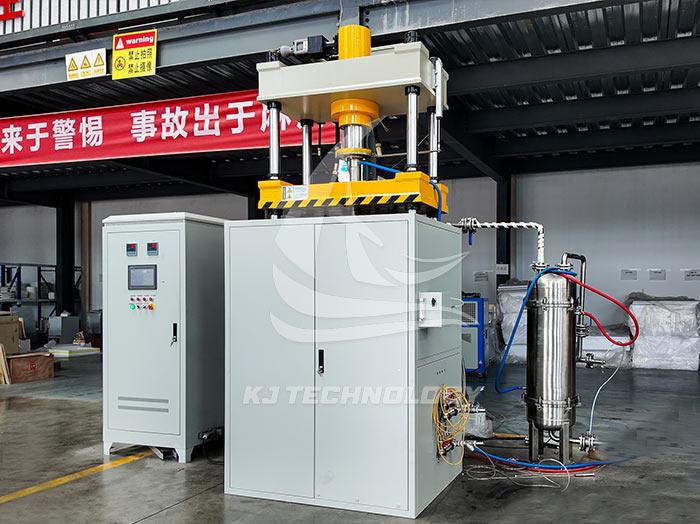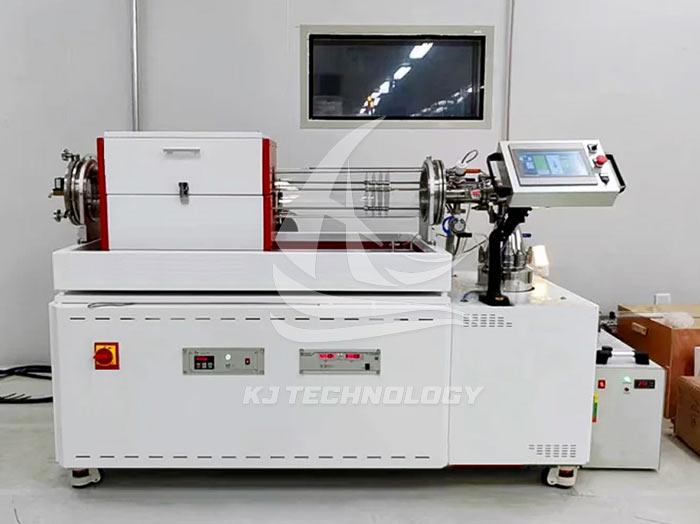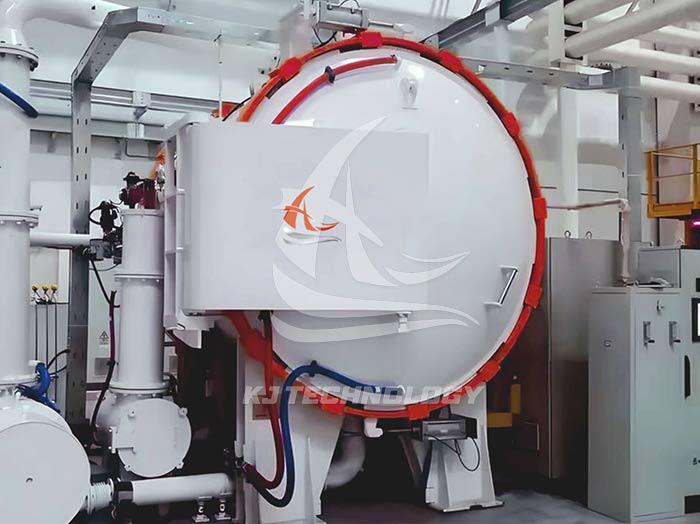Precautions for selecting customized heat treatment vacuum furnaces
 06-16-2025 Author: KJ technology
06-16-2025 Author: KJ technology
The selection of customized heat treatment vacuum furnaces should be comprehensively considered from multiple dimensions such as process adaptability, equipment performance, production and cost, safety and environmental protection. The following are specific precautions:
Process adaptability
Clearly handle materials and processes
Material characteristics: Different materials have significant differences in requirements for heat treatment temperature, vacuum degree, etc. For example, the heat treatment temperature of titanium alloy is usually between 800-1000 ℃, and it requires a high vacuum degree, reaching 10 ⁻³ -10 ⁻⁴ Pa or even higher, to prevent material oxidation and pollution; However, the heat treatment temperature and vacuum degree requirements for some ordinary steels are relatively low.
Process type: Common heat treatment processes include vacuum annealing, vacuum quenching, vacuum sintering, etc. Vacuum quenching requires equipment with rapid cooling capabilities, usually equipped with efficient gas or oil cooling systems; Vacuum sintering has special requirements for temperature uniformity and heating rate.
Consider process compatibility
If the enterprise may expand its business in the future, handle more types of materials or adopt new processes, it should choose a vacuum furnace with certain compatibility. For example, some vacuum furnaces can adapt to the processing needs of different materials and processes by replacing heating elements, adjusting process parameters, and other methods.
Equipment performance
temperature control
Temperature range: The required temperature range is determined according to the process requirements. Generally, the temperature range of a heat treatment vacuum furnace ranges from a few hundred degrees Celsius to over two thousand degrees Celsius. For example, heat treatment of high-temperature alloys may require temperatures above 1300 ℃.
Temperature uniformity: Temperature uniformity directly affects the quality of heat treatment. It is usually required that the temperature deviation within a certain size range should not exceed ± 5 ℃ or less. Temperature uniformity can be improved through furnace structure design, heating element layout, and temperature control system optimization.
Temperature control accuracy: The higher the temperature control accuracy, the more stable the heat treatment quality. Generally, the temperature control accuracy is required to be within ± 1 ℃. The advanced temperature control system adopts PID control algorithm, which can monitor and adjust the temperature in real time to ensure the accuracy of temperature control.
vacuum degree
Ultimate vacuum degree: Select the appropriate ultimate vacuum degree according to the process requirements. For some processes that require extremely high surface quality, such as vacuum brazing, higher ultimate vacuum degrees may be required.
Extraction rate: The extraction rate determines the time for the vacuum furnace to reach the required vacuum degree. Rapid pumping can improve production efficiency and reduce waiting time. The pumping rate is related to the type, quantity, and performance of the vacuum pump.
heating efficiency
Heating elements: Common heating elements include resistance wires, graphite heaters, induction heating coils, etc. Graphite heaters have advantages such as good high-temperature performance and fast heating speed, but their prices are relatively high; Resistance wires have lower costs, but their high-temperature performance is relatively poor.
Furnace insulation: Good furnace insulation can reduce heat loss and improve heating efficiency. Multi layer insulation materials and special insulation structure design can be used to reduce the heat loss of the furnace body.
Production and Cost
Production scale
Furnace size: Determine the furnace size of the vacuum furnace based on the production scale. Large scale production requires the selection of larger vacuum furnaces to improve production efficiency. At the same time, the size and shape of the workpiece should be considered to ensure smooth installation into the furnace.
Furnace loading capacity: Furnace loading capacity refers to the number of workpieces that can be processed at once. Reasonable furnace loading can improve production efficiency and reduce production costs while ensuring heat treatment quality.
Equipment cost
Purchase cost: The purchase cost of vacuum furnaces varies greatly among different brands, models, and configurations. On the premise of meeting the process requirements, equipment with high cost-effectiveness should be selected.
Operating costs: Operating costs include energy consumption, maintenance expenses, replacement of vulnerable parts, etc. Vacuum furnaces with low energy consumption, easy maintenance, and reasonable prices for vulnerable parts should be selected to reduce long-term operating costs.
Safety and Environmental Protection
safety performance
Safety protection devices: Vacuum furnaces should be equipped with comprehensive safety protection devices, such as over temperature protection, over voltage protection, leakage protection, etc. When abnormal situations occur in the equipment, it is possible to promptly cut off the power or take other measures to ensure the safety of operators and equipment.
Operational safety: The operating interface of the device should be concise, clear, and easy to operate. At the same time, detailed operation manuals and safety training should be provided to ensure that operators can use the equipment correctly and safely.
environmental requirements
Waste gas treatment: During the heat treatment process, harmful gases such as carbon monoxide and nitrogen oxides may be generated. Vacuum furnaces should be equipped with exhaust gas treatment devices to treat exhaust gas and meet environmental emission standards.
Noise control: Vacuum furnaces generate certain noise during operation, and effective noise control measures should be taken, such as installing soundproof covers, shock absorbers, etc., to reduce the impact of noise on the surrounding environment.
After-sale service
Manufacturer's reputation and strength
Choosing manufacturers with good reputation and strength can help you understand their situation by consulting industry information, consulting peers, and visiting manufacturers. Famous manufacturers usually have better guarantees in product quality, technological research and development, and after-sales service.
After sales service content
Understand the manufacturer's after-sales service content, including equipment installation and debugging, training, maintenance, and parts supply. Good after-sales service can promptly solve problems that arise during equipment use, reduce downtime, and improve production efficiency.








